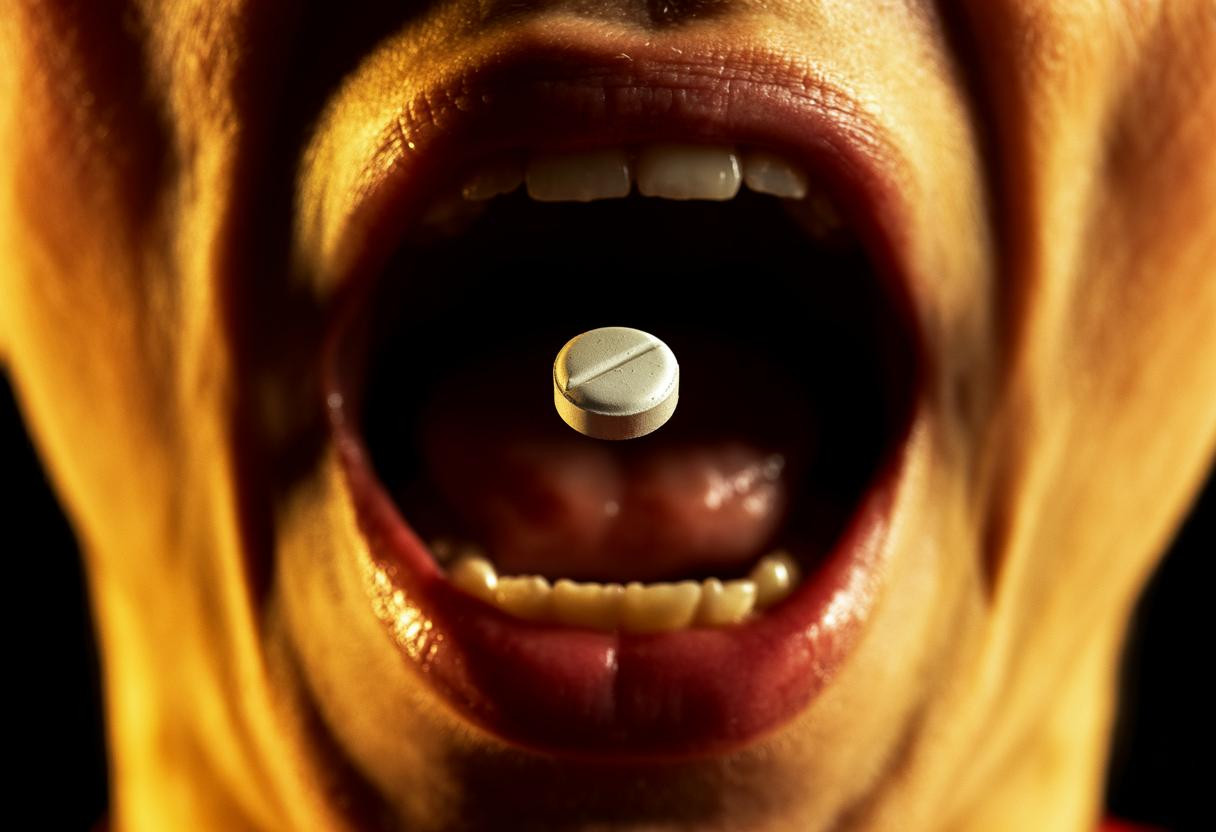If you’ve had a minor stroke, that innocent-looking pill in your medicine cabinet might pose a hidden danger you never saw coming. Over half of all stroke survivors develop swallowing difficulties, transforming routine medication into a potentially life-threatening challenge that catches most patients completely off guard.
The reality hits hard: what seems like a “minor” stroke can fundamentally alter how your brain coordinates the complex dance of muscles required for safe swallowing. While you might feel relatively normal, your neurological pathways have sustained damage that makes every pill a calculated risk.
The hidden neurological disruption behind swallowing dangers
Minor strokes create invisible chaos in your brain’s swallowing control center. The damage disrupts corticobulbar pathways – the neural highways that coordinate 26 different muscles during each swallow. When these pathways malfunction, your brain struggles to orchestrate the precise timing needed to safely transport pills from mouth to stomach.
Recent neurological research reveals that even small strokes affecting areas like the sensorimotor cortex or insula can delay swallowing reflexes by 2-3 critical seconds. During this delay, pills can lodge in your throat or, worse, slip into your airway instead of your esophagus.
The most dangerous disruption involves your upper esophageal sphincter – the muscular gateway between throat and esophagus. Post-stroke, this sphincter often develops hyperreflexia, remaining partially closed when it should open completely. This creates a bottleneck effect that dramatically increases choking and aspiration risks.
Why pills are especially treacherous
Unlike liquids or soft foods, pills require precise coordination to navigate safely. They need enough saliva for lubrication, proper tongue positioning for propulsion, and perfect timing of airway closure. 43% of stroke patients with dysphagia struggle severely with solid medications, compared to just 28% having difficulty with modified textures.
Modern wearable sensors that track swallowing muscle activation reveal that stroke survivors often lose the ability to generate sufficient propulsive force. Their swallowing velocity drops from a normal 10-20 cm/s to under 5 cm/s – too slow to prevent pills from becoming trapped or misdirected.
The shocking scope of post-stroke medication risks
Healthcare professionals are discovering that bedside swallowing tests miss dangerous cases 40% of the time. Patients pass basic assessments but fail when attempting to swallow actual pills, leading to a false sense of security that can prove deadly.
Video fluoroscopy studies show that stroke survivors face a 5-10 times higher aspiration risk when swallowing tablets compared to pre-stroke baselines. Even more concerning, many patients experience “silent aspiration” – pills entering their lungs without triggering cough reflexes, making the danger completely undetectable.
The age factor amplifies everything
For stroke survivors over 40, age-related physiological changes affecting circulation compound swallowing difficulties. Reduced muscle mass, decreased saliva production, and slower reflexes create a perfect storm of risk factors that make pill swallowing exponentially more dangerous.
Smart alternatives that could save your life
The solution isn’t avoiding medication – it’s finding safer delivery methods. Sublingual tablets, transdermal patches, and liquid formulations bypass swallowing risks entirely. Some medications can be safely crushed and mixed with pudding, though 20.8% of medications are unnecessarily modified, potentially reducing effectiveness.
Emerging technology offers hope through AI-driven assessment tools for medical diagnostics that can predict dysphagia risk with unprecedented accuracy. These systems analyze speech patterns and facial muscle movements to identify swallowing impairments before dangerous incidents occur.
Essential safety protocols
Never assume your swallowing is normal after any stroke, regardless of severity. Request video endoscopic evaluation before resuming oral medications. If pills are necessary, take them with thickened liquids rather than water, sit upright for 30 minutes afterward, and learn to recognize aspiration warning signs like persistent coughing or voice changes.
Advanced rehabilitation techniques like the Shaker exercise can strengthen swallowing muscles, while wearable technology for health monitoring provides real-time feedback during recovery.
Your next steps matter more than you realize
The difference between safe medication management and a medical emergency often comes down to one simple action: proper swallowing assessment. Don’t let pride or convenience override safety – even minor strokes deserve major precautions when it comes to pill swallowing.
